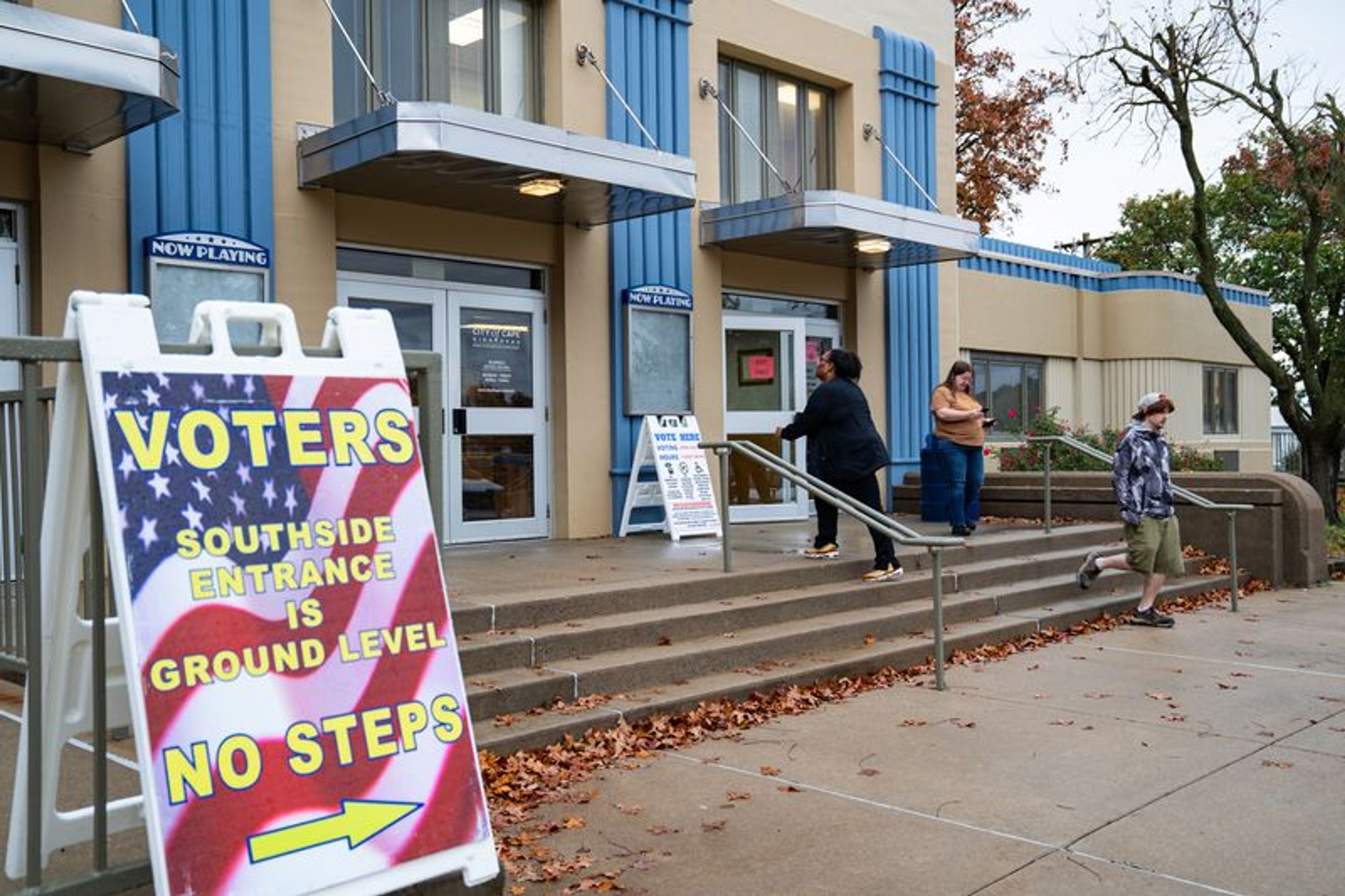Sitting on the volcano
It feels like an economic eruption is coming. Chronic and growing federal budget deficits. A long, expensive war. Rapidly rising fuel and food prices. Expensive new social welfare programs. If those items sound like recent headlines, give yourself an "A" for being an excellent student of current events. ...
It feels like an economic eruption is coming.
Chronic and growing federal budget deficits. A long, expensive war. Rapidly rising fuel and food prices. Expensive new social welfare programs.
If those items sound like recent headlines, give yourself an "A" for being an excellent student of current events. But those are also the same pressures that caused the economic eruptions of the 1970s and early 1980s, when ineffective government action produced years when double-digit inflation destroyed the buying power of paychecks and savings.
The only cure then -- and I worry the only cure available now -- was stern measures that forced market interest rates up to nearly 20 percent. The resulting recession saw unemployment peak at 10.8 percent in December 1982, the highest level since the Great Depression.
For those of you old enough to remember that period, I offer a refresher on the causes, which had roots in the political decisions of the 1960s. And for those too young to remember, I offer this warning -- when a volcano erupts, the only thing to do is get out of the way.
In the mid-1960s, unemployment was low and inflation was in check. The government under President Lyndon B. Johnson was ready to try something new -- Medicare, Medicaid, Supplemental Security Income and Aid to Families With Dependent Children provided substantial new income supports. Other expensive programs aimed at fighting poverty targeted housing, job training and college aid.
And Johnson decided to escalate the Vietnam War, eventually putting 500,000 soldiers there and spending billions on armaments and aid.
As Johnson yielded the presidency to Richard Nixon, inflation began to creep into the economy and unemployment started to rise. Nixon sought to cool inflation through government price controls, which only created artificial shortages.
In 1971, Nixon took the U.S. off the gold standard, ending the postwar currency system that made the dollar the worldwide standard of exchange. That allowed the dollar to weaken against foreign currencies. He appointed people to the Federal Reserve Board who politically committed themselves to low interest rates as a means of fighting unemployment.
Nixon's actions overall did little to stem inflation, but his appointees to the Federal Reserve continued to make sure credit was readily available. Then came the oil shocks.
When war broke out between the Arabs and Israelis in October 1973, oil-producing countries in the Middle East refused to sell petroleum to the United States because of its support for Israel. Oil shot up from $3.60 a barrel to $8.55 by December 1973, or $41.72 in inflation-adjusted dollars.
Gas lines became common. Over-the-road truckers staged a strike against higher fuel costs and lower speed limits. And in some cities, picket lines sprung up around grocery stores to protest high meat prices.
Next came President Gerald Ford's plan for controlling inflation -- talk. His "Whip Inflation Now" program, with the infamous red pins emblazoned with the initials WIN, was ridiculed from numerous corners. Needless to say, it didn't work.
World events intervened again in 1979, when the Iranian Revolution cut off oil supplies from that nation and the subsequent war between Iran and Iraq further disrupted supplies. Oil went from $16 a barrel in March 1979 to $38 a barrel in December, or from $47.74 to $113.39 after adjusting for inflation.
In the eyes of many people, the key player in the effort to control inflation came on the scene in August,1979 when Paul Volcker was named chairman of the Federal Reserve by President Jimmy Carter. Volcker immediately reversed the loose money policies of his predecessors.
Prices surged up 12.4 percent in 1980 as the eruption reached full strength. As Volcker's interest rate increases took hold, housing sales plummeted, factories were closed and entire towns, such as Flint, Mich., were devastated.
Inflation is classically defined as too much money chasing too few goods. Volcker's interest rate increases cooled demand for many big-ticket items, at the cost of massive unemployment. The loss of jobs contributed to defeating inflation. When one out of every nine people is out of work, demand slackens.
The recovery finally began as a result of three factors -- big tax cuts pushed by President Ronald Reagan, big spending on defense, also pushed by Reagan, and a dramatic decrease in the price of oil.
By 1982 significantly lower demand combined with new oil sources depressed the market. The price of oil dropped to $11 a barrel in January 1986 -- $21.74 when adjusted for inflation -- and remained under $30 a barrel until 2003.
Volcker stayed in office as chairman of the Federal Reserve until 1987. Inflation was a mere 1.1 percent in 1986 and generally stayed below 3 percent for the next 15 years.
With inflation under control and oil prices stable, the two overriding economic concerns of the late 1980s and 1990s were employment and the federal deficit. Economic policies of the 1990s brought us to 2000 with fantastic surpluses in the federal treasury and unemployment at low levels not seen since the mid-1960s.
I've used this much ink on the historic details in order to bring us to today. We are embroiled in a lengthy, expensive war. Oil prices as I write this are $140 a barrel, up 400 percent in five years. We are in the third full year of the Medicare Part D program, expected to cost $724 billion through 2015. The Federal Reserve, in an attempt to battle recessionary pressures, has lowered interest rates three times this spring. And the federal deficit, which seemed under control in 2000, has ballooned to the largest in history.
Inflation is creeping up again. Prices in May were 4.2 percent higher than in May 2007. Taking May as a single-month snapshot, the annual inflation rate is 10 percent. Unemployment is 5.5 percent, the highest since July 2005.
There are some new elements in the magma. Instead of Japan being our big foreign trade worry, we are concerned about Chinese factory output swamping our markets. Instead of the dollar falling against a number of European currencies, it is losing value against the euro.
And the rapid run-up in oil prices can't be traced to supply disruptions in the Middle East -- it can be traced, at least in part, to that classic definition of inflation. There is too much money from the U.S., Europe, China and India chasing too little oil.
The foreclosure crisis in the U.S., with its accompanying crash in home values in many markets, is erasing one of the last sources of unused cash available to many families. At the height of the housing bubble in 2005, households spent $531 billion more than they earned after taxes, much of that coming from money borrowed against home equities, Paul Kriel, director of economic research at Northern Trust Co., told the Associated Press in April.
That compares to a surplus of earnings over spending of $108 billion in 1987.
We have a choice to make. Are we willing to accept the pain of a 1979-to-1982-style economic eruption or do we take steps to relieve pressure under the volcano slowly and with less disruption?
If we are counting on politicians in Washington, it may be time to get measured for an asbestos overcoat.
Rudi Keller's column today is a reprint from the August Business Today, which is now available. This month's issue focuses on the role of education in preparing employees, the role of student-workers and taking advantage of the back-to-school sales tax holiday.
Rudi Keller is the business editor for the Southeast Missourian. Contact him at rkeller@semissourian.com, or call 335-6611, extension 126.
Connect with the Southeast Missourian Newsroom:
For corrections to this story or other insights for the editor, click here. To submit a letter to the editor, click here. To learn about the Southeast Missourian’s AI Policy, click here.








